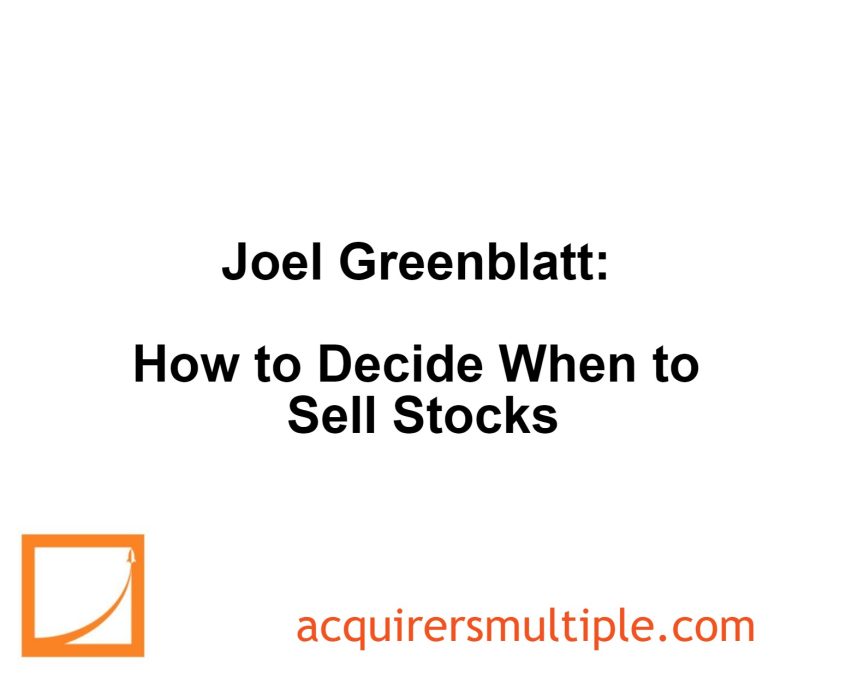In his book – You Can Be A Stock Market Genius, Joel Greenblatt explains why selling stocks is often harder than buying them. While buying opportunities are well-defined, especially after special events like spinoffs or bankruptcies, selling decisions are more complex.
The market will eventually recognize the value revealed by such events, reducing your edge over time. Triggers to sell include substantial price increases or deteriorating company fundamentals.
A useful strategy is to “trade the bad ones, invest in the good ones.” This means selling stocks of average companies in tough industries once their attributes become widely known, while holding onto stocks of fundamentally strong companies for longer-term investments.
Here’s an excerpt from the book:
This is probably as good a time as any to discuss the other half of the investment equation—when to sell. The bad news is that selling actually makes buying look easy.
Buying when it’s relatively cheap, buying when there’s limited downside, buying when it’s undiscovered, buying when insiders are incentivized, buying when you have an edge, buying when no one else wants it—buying kind of makes sense. But selling—that’s a tough one. When do you sell? The short answer is—I don’t know. I do, however, have a few tips.
One tip is that figuring out when to sell a stock that has been involved in some sort of extraordinary transaction is a lot easier than knowing when to sell the average stock. That’s because the buying opportunity has a well-defined time frame. Whether you own a spinoff, a merger security, or a stock fresh out of bankruptcy, there was a special event that created the buying opportunity.
Hopefully, at some point after the event has transpired, the market will recognize the value that was unmasked by the extraordinary change. Once the market has reacted and/or the attributes that originally attracted you to the situation become well known, your edge may be substantially lessened.
This process can take from a few weeks to a few years. The trigger to sell may be a substantial increase in the stock price or a change in the company’s fundamentals (i.e., the company is doing worse than you thought).
How long should you wait before selling? There’s no easy answer to that one either. However, here’s a tip that has worked well for me: Trade the bad ones, invest in the good ones.
No, this isn’t meant to be as useless as Will Rogers’s well-known advice: “Buy it and when it goes up, sell it. If it doesn’t go up—don’t buy it.” What “trade the bad, invest in the good” means is, when you make a bargain purchase, determine what kind of company you’re buying.
If the company is an average company in a difficult industry and you bought it because a special corporate event created a bargain opportunity, be prepared to sell it once the stock’s attributes become more widely known.
You can find a copy of the book here:
You Can Be A Stock Market Genius – Joel Greenblatt
For all the latest news and podcasts, join our free newsletter here.
Don’t forget to check out our FREE Large Cap 1000 – Stock Screener, here at The Acquirer’s Multiple:



